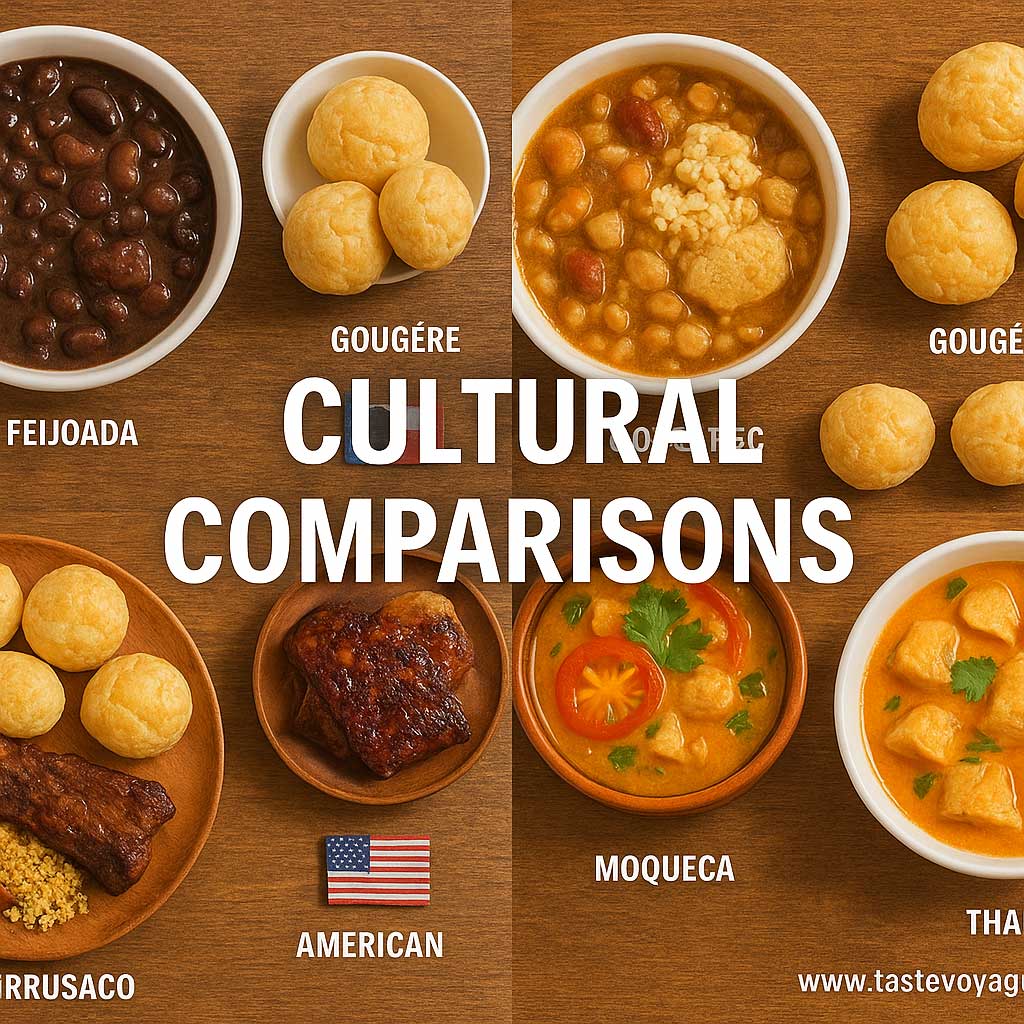Brazilian vs Spanish Cuisine: Key Differences Explained
Travel the World Through Food >> Brazilian Cuisine>>Cultural Comparisons>> Brazilian vs Spanish Cuisine: Key Differences Explained
Brazilian vs Spanish Cuisine: Key Differences Explained
Exploring the Rich Tapestry of Brazilian and Spanish Cuisines
Food is one of the most beautiful expressions of culture. It reflects history, geography, and community values. When comparing Brazilian and Spanish cuisines, we see two vibrant culinary worlds that, while sharing some common ingredients, showcase distinct flavors, traditions, and cultural significance. Both cuisines offer a rich tapestry of dishes that celebrate their unique identities and regional pride.
The Heart of Brazilian Cuisine: Diversity and Flavors
Brazilian Cuisine is a colorful mosaic shaped by a wide array of local ingredients and regional influences. It is renowned for its bold flavors, hearty dishes, and the use of fresh produce. Staples like rice and beans serve as a foundation for many meals, symbolizing comfort and unity. The cuisine emphasizes a balance of savory, sweet, and spicy elements, often in a single dish.
One of the most iconic dishes is the feijoada, a hearty black bean Stew with meats that embodies community and tradition. The use of tropical fruits, such as mangoes and pineapples, highlights Brazil’s lush landscapes. Street foods like acarajé and tapioca showcase the vibrant street food scene and reflect the lively spirit of Brazilian culture. The cuisine’s versatility makes it a celebration of regional diversity—from Amazonian flavors to coastal seafood dishes.
The Spirit of Spanish Cuisine: Heritage and Simplicity
Spanish cuisine is characterized by its emphasis on fresh, seasonal ingredients and simple, yet flavorful preparations. It is deeply rooted in regional traditions, with each area offering distinct specialties. Tapas, small dishes meant for sharing, exemplify the social aspect of Spanish dining and encourage communal enjoyment.
Paella, perhaps the most famous Spanish dish, showcases the country’s love of rice and saffron, combining seafood, meats, and vegetables into a harmonious dish. Tapas like patatas bravas, chorizo, and jamón ibérico further emphasize the Spanish knack for transforming everyday ingredients into culinary delights. Olive oil, garlic, and fresh herbs are fundamental components, reflecting the Mediterranean climate and agricultural richness.
Cultural Significance and Culinary Values
Both Brazilian and Spanish cuisines prioritize sharing and community. In Brazil, meals often bring families together, emphasizing connection and celebration. The use of local ingredients and Traditional Recipes fosters a sense of cultural pride and identity.
In Spain, the act of sharing tapas embodies friendship and conviviality. The focus on fresh, quality ingredients underscores a respect for nature and local produce. These cuisines also highlight the importance of tradition, with recipes passed down through generations that continue to shape modern culinary practices.
Conclusion: Celebrating Culinary Diversity
Brazilian and Spanish cuisines each tell a story of their land and people through food. Brazilian cuisine shines with its vibrant, diverse flavors and hearty dishes, while Spanish cuisine captivates with its simplicity, regional diversity, and social dining customs. Exploring these culinary worlds offers a delightful journey into the heart of their cultures, reminding us of the universal language of good food and shared traditions. Whether you prefer the colorful zest of Brazil or the warm, inviting flavors of Spain, both cuisines invite you to celebrate their rich culinary heritage.
